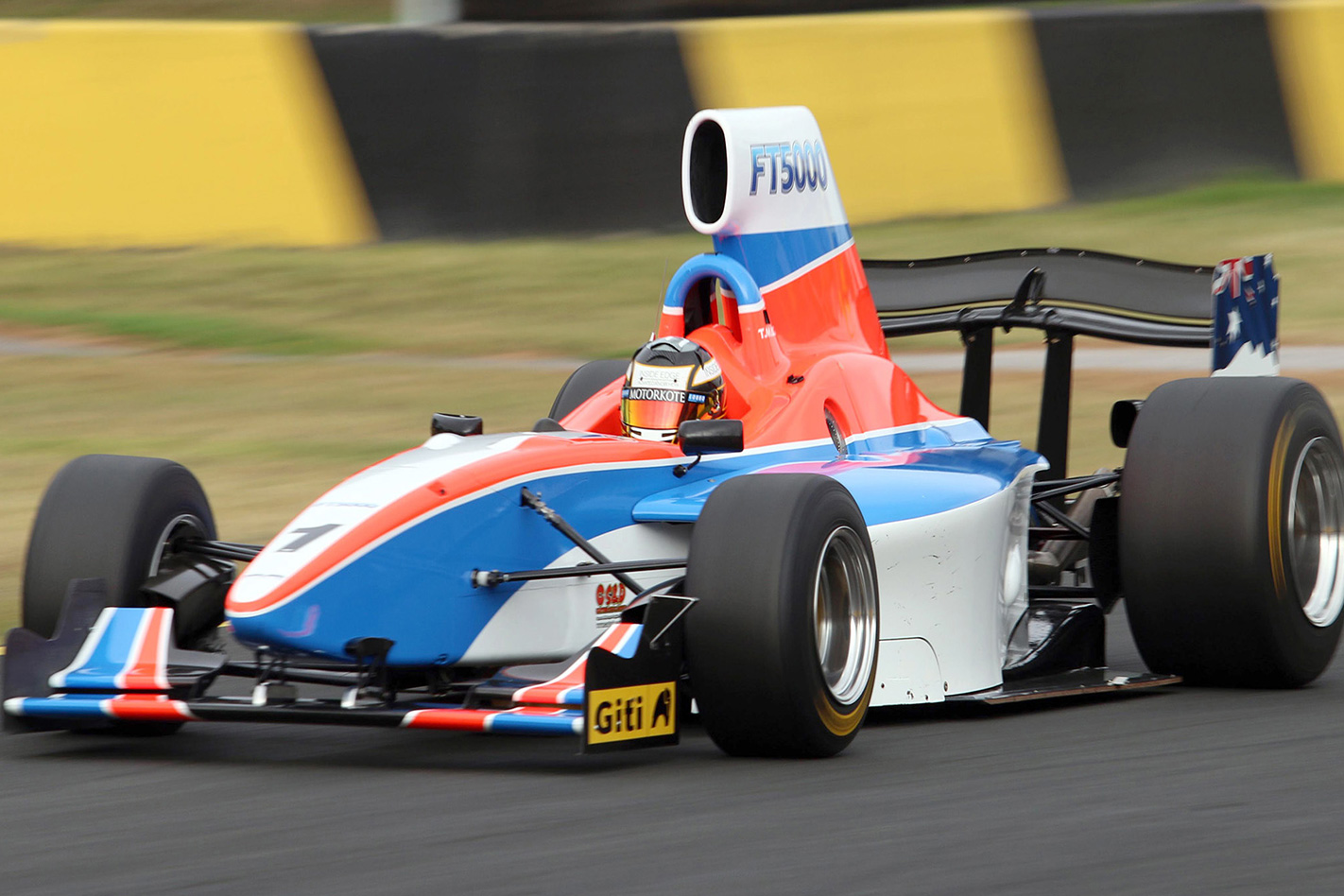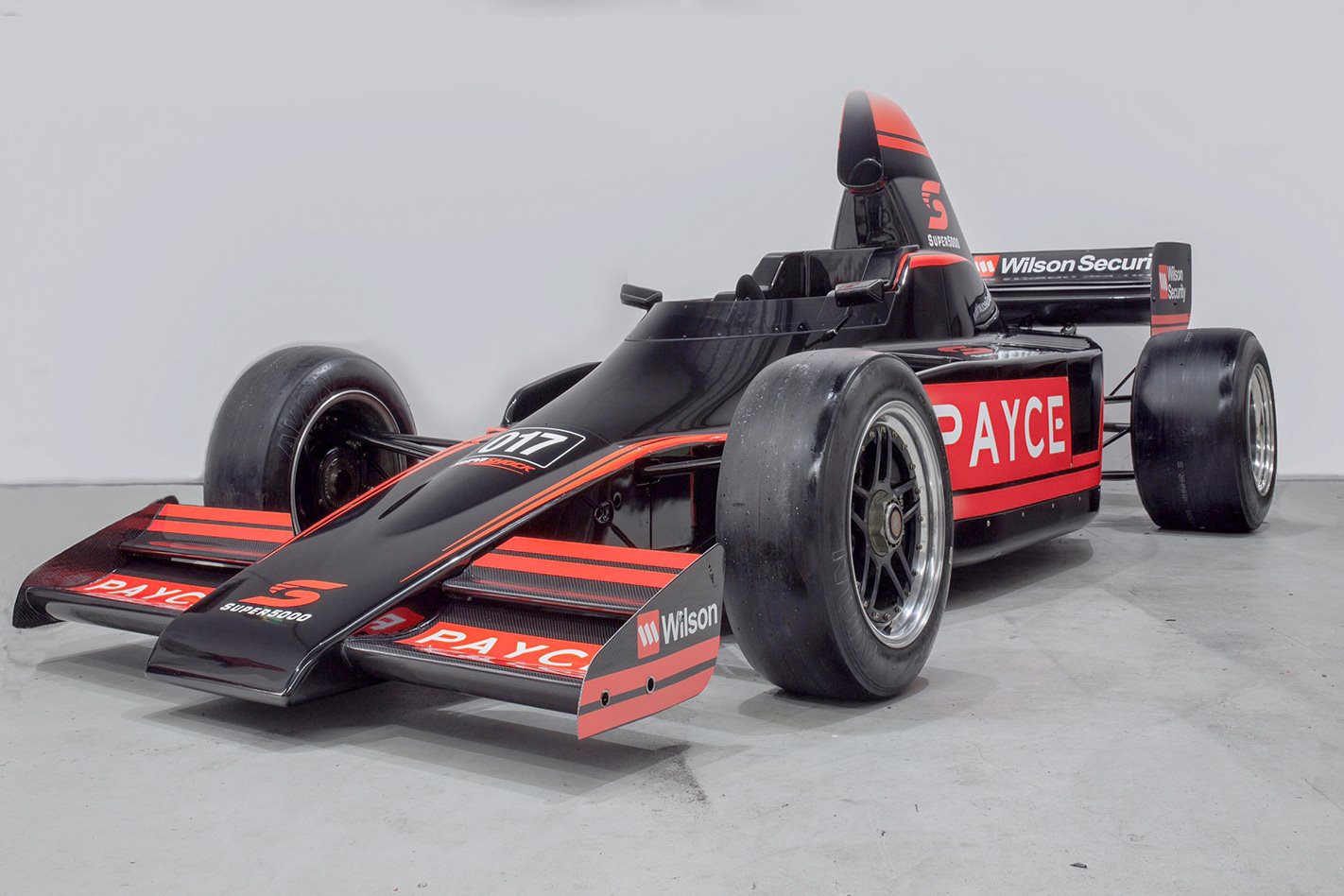They were big, brawny, fast and loud. Low-slung open-wheelers with fat tyres, wide wings, towering air scoops and rumbling V8s.
No wonder Formula 5000 is remembered so fondly. F5000’s fame is so enduring that local efforts to bring back the ‘big bangers’ of single-seater racing are well under way. A modern version is scheduled to be thundering around Australian tracks by the middle of next year.
The prospect has excited open-wheel aficionados, who rejoice in the idea of V8 racers without roofs, doors or fenders. But the revival has not been without rancour. Until a recent accord, there were two rival proposals for the reincarnation of F5000. Super5000 was supported by Supercars, while Formula Thunder 5000 was the brainchild of an independent enthusiast.
There was only room for one and among purists, it was seen as big business versus a battler. Supercars came off as a bully, accused of trying to crush ex-racer and motorsport publisher Chris Lambden’s FT5000 initiative with a copycat concept.
Long story short, after a divisive war of words, wiser heads prevailed and the pair of projects has been combined under the S5000 umbrella to create a V8-powered open-wheeler series aimed at joining the Supercars support race program in mid-2018.
You have to wonder, though, whether all the angst was worth it. After all, we are talking about an extremely niche need. The appeal is limited to dedicated fans who buy into the nostalgia of F5000 and pine for raucous single-seater racing. A 21st century take on F5000 is a lovely idea that warms the cockles of the hearts of those who saw the originals in action.

The noise and fury made such an impression that their mere mention is met with big smiles by enthusiasts of a certain age. It was Australia’s pinnacle racing category from 1970-81 and also headlined the final years of the Tasman Cup summer series. Aussie constructors Matich and Elfin rivalled British builders Lola and Chevron, and the Repco-modified Holden 308 V8 challenged the ubiquitous 302 cubic inch Chevrolet.
F5000’s hairy chested heyday lasted little more than a decade, but it is still regarded as a golden era of open-wheel racing. The legend has grown to almost mythical proportions, with interest fuelled by a revival movement in historic racing.
Restored period F5000s have become the crowd-pleasers at retro meetings in Australia, NZ and the USA, reminding diehard fans just how lacklustre single-seater racing has become. Since the demise of the raspy 3.6-litre V6-powered Formula Holden a decade ago, Australia hasn’t had a truly challenging top-level open-wheel category, much less one that provides any real sight-and-sound spectacle.
No wonder, then, that the glowing memories of F5000 inspired interest in a redux. What are the odds, though, that two variations of this popular old theme would come along at roughly the same time?
Although aimed at the same ‘market’, Formula Thunder 5000 and Super5000 varied significantly in execution and ultimate costs. Lambden’s FT5000 is based on the design of the 2009 Swift Formula Nippon chassis, powered by a locally developed version of the Ford Coyote V8 crate engine and featuring F5000’s signature ‘snorkel’ air intake.
The S5000 is a bespoke machine using a Supercars-spec GM V8 – but adaptable to the Ford and Nissan V8s, as well as future twin turbo V6s and even turbo fours – and claimed to comply with the latest F1 safety standards, while mimicking the look of the classic Lola T332.
The political fallout that divided fans and potential customers forced a truce in July, with Lambden brought into the S5000 fold to keep the peace. But the odds are the unification will be much more S5000 than FT5000, retaining the custom-made chassis and Supercars-sourced V8s.
The whole idea of recycling the existing five-litre V8s in a single-seater sideshow remains flawed because of the cost of the motors and the false assumption there will be a surplus due to a mass migration to twin turbo V6s.
While a return of domestic open-wheelers that have power, presence, noise and speed will be applauded by dyed-in-the-wool enthusiasts, reinventing F5000 is not only an indulgence, but an irrelevance.





